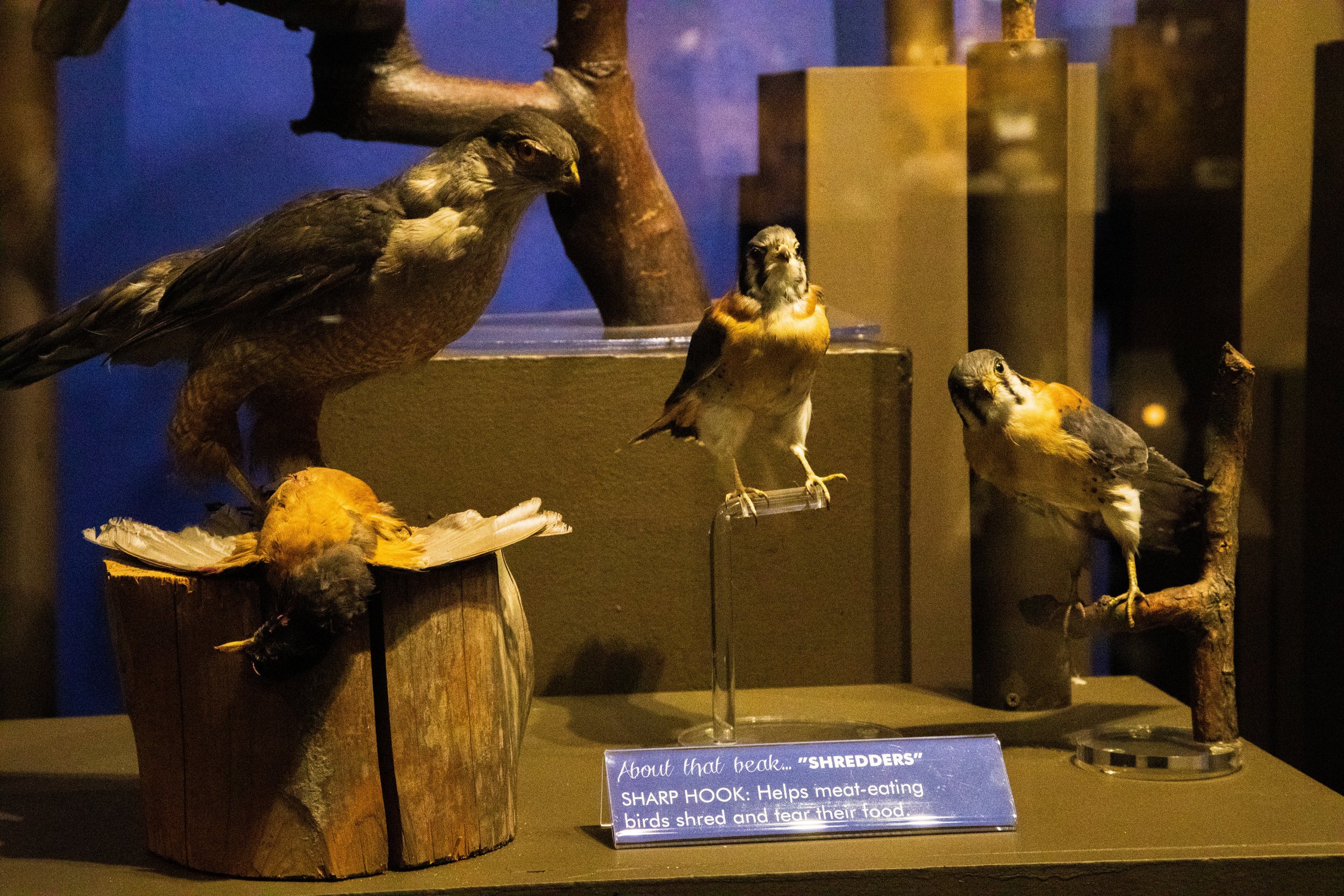John Edson’s Hall of Birds
Hundreds of taxidermied birds are on display at the Whatcom Museum
A tufted puffin displayed next to a description of the bird written by John Edson in 1894 at the John Edson Hall of Birds exhibit at Whatcom Museum. // Photo by Emily Davis
Story and Photos by Emily Davis
April 22, 2024
Taxidermy has been practiced for centuries. Hunters mount animals on their walls as trophies, and hobbyists sometimes dress animals in clothes and put them in whimsical positions. In the 1800s, middle-class citizens used stuffed animals to show off their wealth, and scientists like Darwin collected and preserved animals to further study them.
Ornithologist John Edson collected and preserved hundreds of birds to study and educate during the late 1800s. His birds, along with the birds taxidermied by Edward Edson (unrelated) and Edward Booth, now live in the John Edson Hall of Birds exhibit at the Whatcom Museum.
John Edson’s Hall of Birds exhibit holds some of the oldest artifacts in the museum. It is the oldest exhibit and dates back to 1941 when the museum was first founded. Edson was also one of the museum's founding trustees and acted as its initial curator.
Before the use of cameras, scientists studied animals by killing and stuffing them. However, in 1918, the Migratory Bird Treaty Act was implemented to prohibit killing or collecting native birds.
“While things may have been taken out of nature years ago, we approach that very differently now,” Adrienne Dawson, Whatcom Museum Director of Marketing and Public Relations, said. Dawson is also a hobby taxidermist.
There are currently 535 pieces in the exhibit from the original collection.
A case of positioned small birds at the John Edson Hall of Birds exhibit at Whatcom Museum. Although separate stories, these birds are positioned as they would be seen in nature. // Photo by Emily Davis
Although most of the birds date back to the 1890s, there is a newer resident to the Hall of Birds: ‘Sparky’ the trumpeter swan.
“Affectionately nicknamed Sparky, [it] actually flew into the power lines back in 2017 in Skagit County,” Drew Whatley, a Whatcom Museum educator said.
Taxidermy is more than stuffing animals. An artistic eye is important to catch every detail of an animal's feather, snout, or tail. Understanding the anatomy and behavior of an animal and having artistic ability are needed to display the animals in a life-like fashion.
Sparky the Trumpeter Swan is the newest addition to the John Edson Hall of Birds exhibit at Whatcom Museum. Sparky flew into a power line in 2017 and was stuffed by the North Cascades Audubon Society and donated to the collection.// Photo by Emily Davis
Initially, the museum didn’t have a trumpeter swan in their collection because the species is endangered. Once Sparky was found, The North Cascades Audubon Society had Sparky preserved and donated to the museum’s collection.
It takes time and patience to study the form of the animal, create a mold, and present it as it would be seen in nature, according to Dawson. A lot of the artistry in taxidermy comes from presenting the animal rather than preserving the animal.
“That can be very different though from taxidermists who are creating more fantastical pieces for decoration where maybe what it looks like in nature isn't as important, but for our purposes, that's a key piece,” Dawson said.
John Edson, the ornithologist who preserved all of the birds in the first place, wrote that it was undesirable to show children and adults distorted corpse-like bodies of lifeless birds and that the psychological effects of seeing such an atrocity were undesirable.
And yet, his collection remains on display at the Whatcom Museum, allowing viewers to decide for themselves what birds they’d like to view. The birds there are living out a legacy much larger than their mortal lives.
A display of taxidermied mice in various poses sold at the Macabre and Whimsical Exhibit in Sacramento, CA on June 24, 2023. // Photo by Emily Davis








